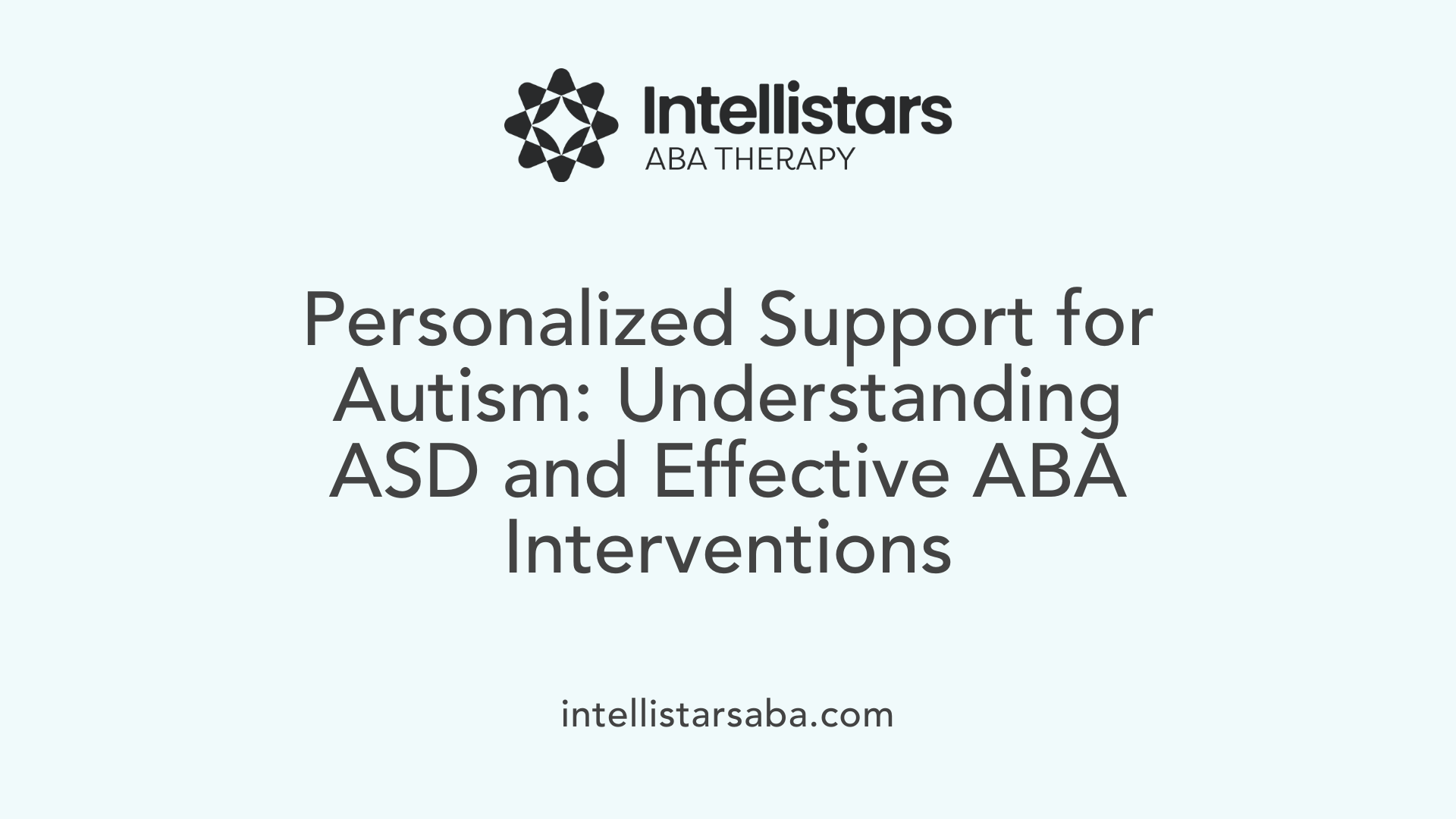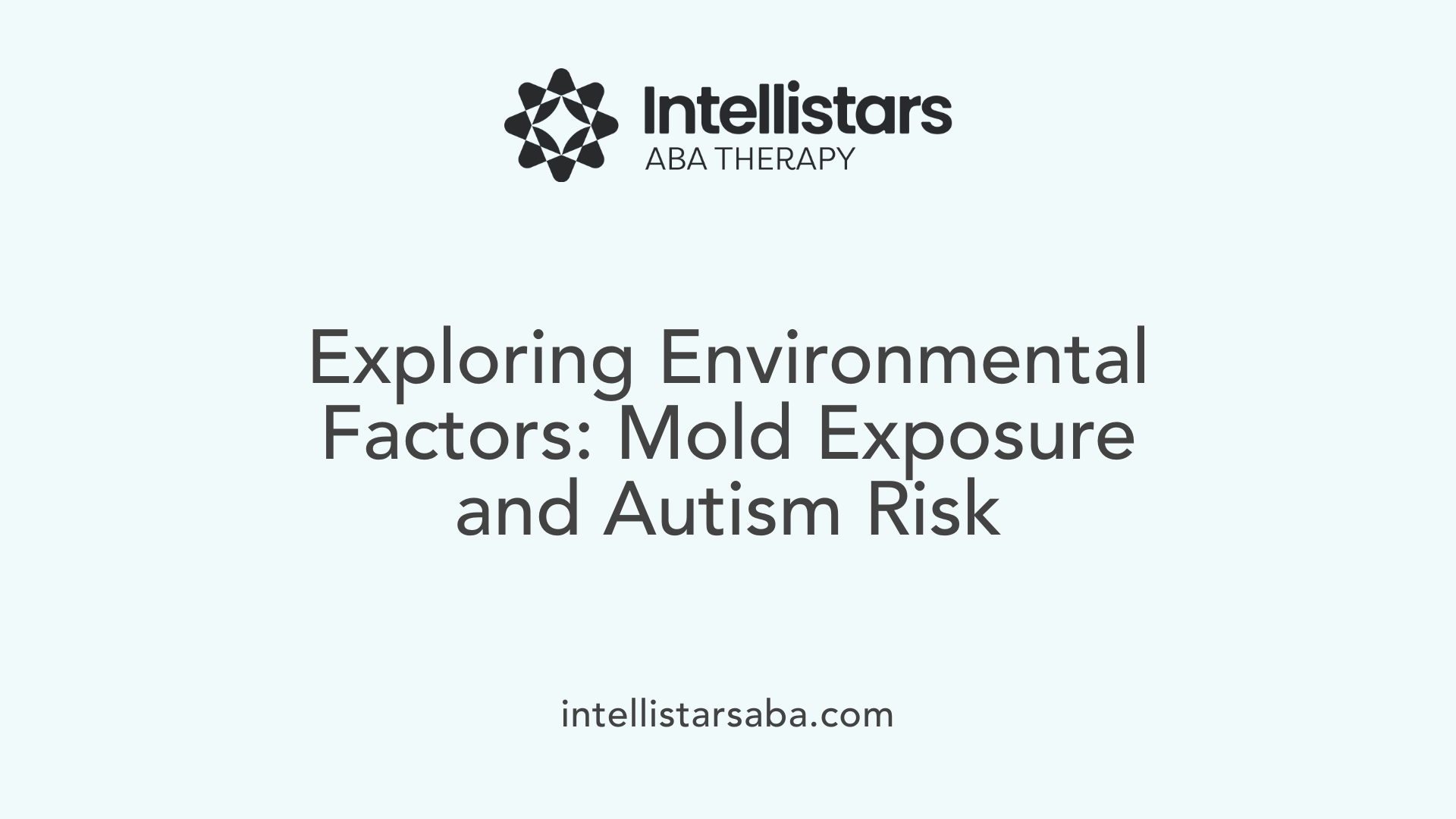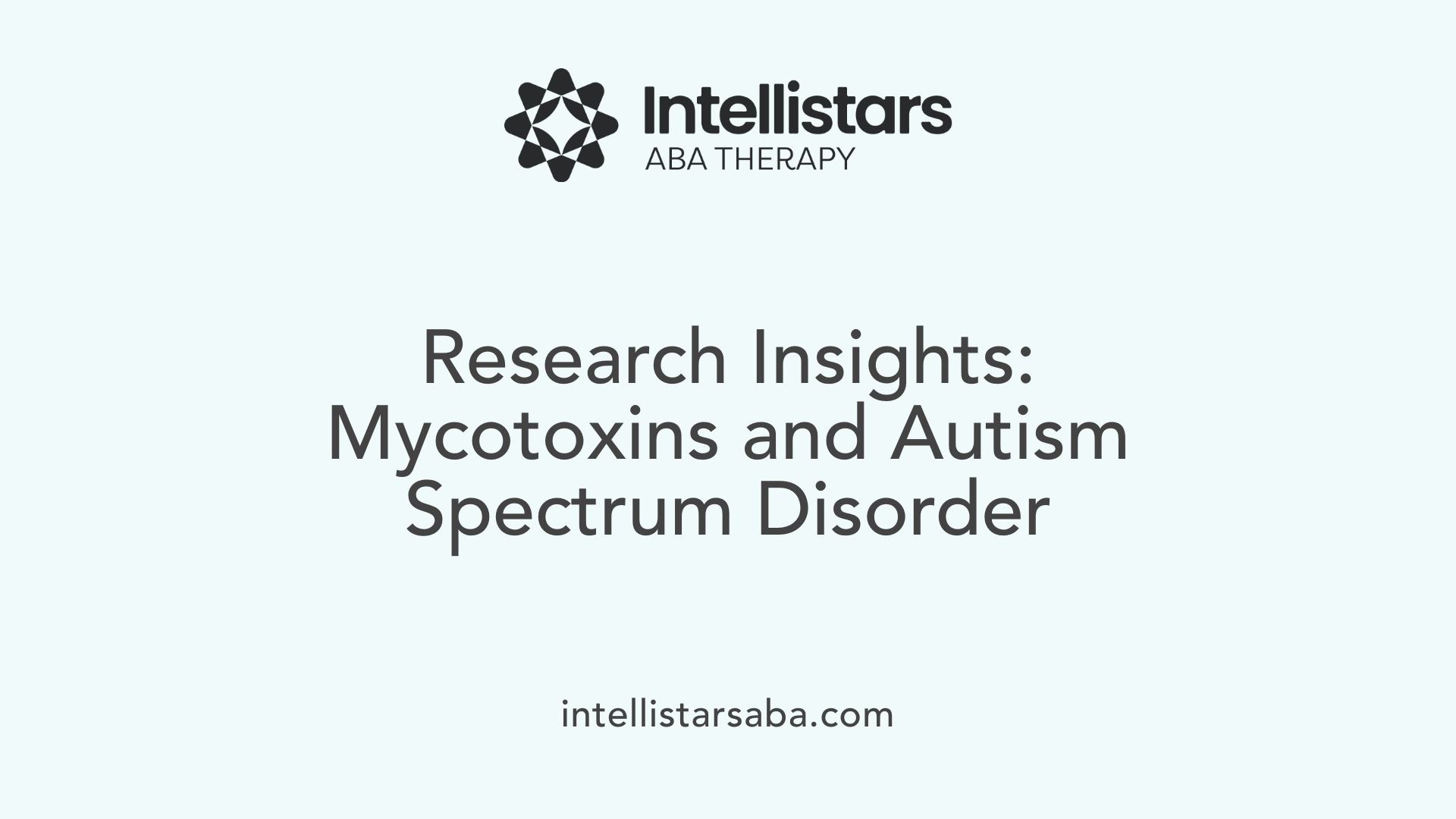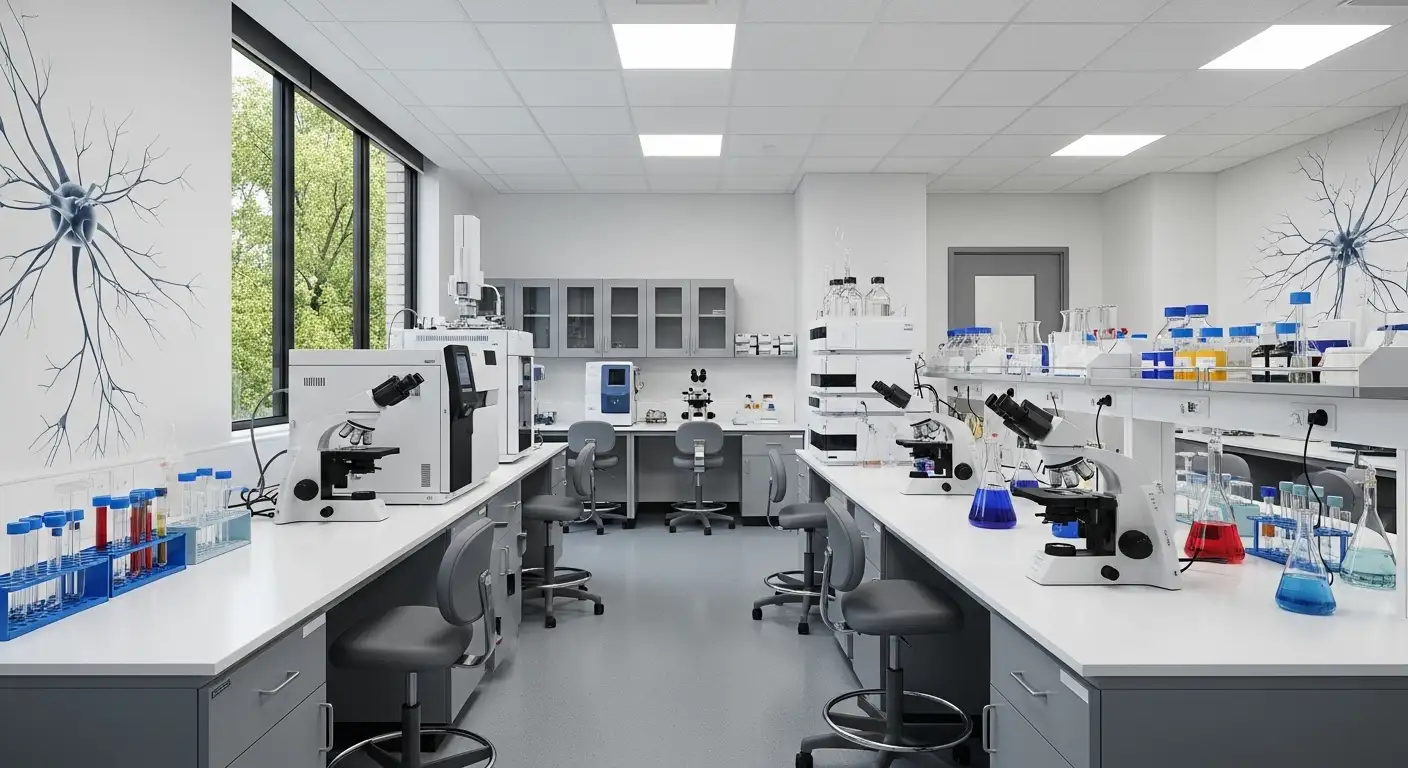Investigating Environmental Factors in Autism Development
Autism Spectrum Disorder (ASD) is a multifactorial condition influenced by genetics and environmental factors. Recently, scientific inquiry has turned towards environmental triggers such as mold and its toxic byproducts — mycotoxins — to understand their potential role in autism. This article delves into current research and expert insights to explore whether mold exposure contributes to autism and how behavioral therapies like Applied Behavior Analysis (ABA) support affected individuals.
Understanding Autism Spectrum Disorder and ABA Therapy

Overview of Autism Spectrum Disorder
Autism Spectrum Disorder (ASD) is a developmental condition characterized by challenges with social skills, communication, and repetitive behaviors. Individuals with autism have a unique way of perceiving the world and interacting with others, making personalized support essential for their growth and development.
Definition and Role of Applied Behavior Analysis (ABA) Therapy
Applied Behavior Analysis (ABA) therapy is an evidence-based approach that helps individuals with autism by using principles of learning to encourage positive behaviors and reduce harmful ones. It involves assessing behaviors, identifying environmental factors affecting those behaviors, and designing customized plans. Techniques such as positive reinforcement are commonly used to promote communication, social skills, and daily living abilities.
Goals of ABA Therapy
ABA therapy primarily aims to improve communication skills, like understanding and using language effectively. It supports better social interaction, helping individuals engage with peers and develop empathy. Another major goal is increasing independence in everyday activities while reducing behaviors that may interfere with learning or social participation. Progress is regularly tracked to ensure goals are met and adjusted as needed.
Professionals Providing ABA Therapy Services
ABA therapy is typically delivered by certified professionals. Board Certified Behavior Analysts (BCBAs) design and oversee treatment plans, while Registered Behavior Technicians (RBTs) provide direct therapy under supervision. Licensed psychologists or physicians may also be involved in diagnosing autism and authorizing services. These experts work closely with families to create effective, personalized interventions. Therapy can take place in clinics, schools, homes, or community settings, depending on the individual's needs.
Mold Exposure as a Potential Environmental Factor in Autism

Links between mold exposure and autism
Mold exposure is being explored as a potential contributing factor to autism spectrum disorder (ASD) in some children. Children with autism often have an impaired ability to detoxify harmful substances, making them more susceptible to mycotoxins—poisonous compounds produced by certain molds. Although specific studies have not consistently found mycotoxins in children with ASD, ongoing research suggests that environmental mold exposure during early developmental stages may influence the likelihood or severity of autism.
Impact of mold on neurological and immune systems
Mycotoxins from mold—such as ochratoxin A and trichothecenes—have been shown to affect multiple organs, particularly the central nervous system and immune system. These toxins can cause neurological damage, fatigue, brain fog, headaches, and immunodeficiency. Mold colonization in the gut, sinuses, and lungs may further disrupt immune function, potentially leading to neuropsychiatric symptoms and PANS-like presentations. Interaction between mycotoxins and immune cells like mast cells could provoke immune activation and cytokine release, influencing neurodevelopment.
Emerging research connecting mold to neurodevelopmental disorders
Recent studies indicate an association between mold exposure and neurodevelopmental disorders, including autism. For example, neurological effects from mycotoxins may impair mitochondria and reduce energy production, which are critical in brain development. However, a pilot study analyzing urinary mycotoxins in children with and without ASD found no significant difference in exposure levels, highlighting challenges in detecting past exposures and the need for sensitive testing during pregnancy and early childhood. Advanced molecular tests, such as the Great Plains OAT test, help detect mold colonization in the digestive tract, supporting early identification and treatment of fungal issues.
Overall, the evidence points to mold exposure as a complex environmental factor that may contribute to autism's development or exacerbate behavioral symptoms through its effects on neurological and immune systems. Continued research and improved detection methods are vital to better understanding this connection and guiding interventions.
Health Effects of Mold and Mycotoxins Related to Autism Symptoms
What Allergy Symptoms and Cognitive Issues Does Mold Cause?
Exposure to mold can trigger allergy symptoms including sneezing, nasal congestion, and skin irritation. Beyond these, individuals often experience fatigue and brain fog, which together can significantly reduce quality of life. These symptoms may closely overlap with behavioral challenges seen in children with autism, making mold's impact a potential contributor to such behavioral issues.
How Does Mold Colonization Affect the Immune System?
Mold can colonize various areas of the body such as the gut, sinuses, and lungs. This colonization stresses the immune system and disrupts its normal function. Particularly in children with autism, who may already have immune dysregulation and impaired detoxification capabilities, mold-related immune dysfunction may trigger additional symptoms resembling Pediatric Acute-onset Neuropsychiatric Syndrome (PANS).
What Neurological Effects Do Mycotoxins Have?
Mycotoxins produced by molds like Stachybotrys, Fusarium, and Trichoderma have been linked to neurological damage, including neurotoxicity and neuropsychiatric effects. These toxins impair mitochondrial function, reduce energy production, and can contribute to cognitive impairments such as memory difficulties and decreased concentration. Such neurological impacts are especially concerning for children with autism, as ongoing exposure to mycotoxins might exacerbate behavioral and developmental challenges.
This evidence points to a complex relationship between mold, mycotoxins, immune health, and neurological function, emphasizing the importance of addressing environmental mold exposure in supporting children with autism.
Mold Colonization and Its Relevance to Children with Autism
What Areas Can Mold Colonize in the Body?
Mold can colonize several areas in the body, including the gut, sinuses, and lungs. This colonization contributes to immune system dysfunction and causes various health challenges, such as fatigue and brain fog. When mold colonizes these sites, it can release mycotoxins that exacerbate symptoms related to neurological and systemic inflammation.
How Is Detoxification Impaired in Children with Autism?
Children with autism often have an impaired ability to detoxify harmful substances like mycotoxins. This weakened detoxification system makes them more vulnerable to the toxic effects of mold. Since these children cannot efficiently clear mold toxins, the risk of accumulation increases, potentially worsening behavioral and physiological symptoms.
What Are the Immune System Impacts and PANS-like Symptoms?
Mold colonization stresses the immune system by triggering chronic immune activation. This immune stress may resemble PANS (Pediatric Acute-onset Neuropsychiatric Syndrome)-like symptoms, which involve sudden onset neuropsychiatric conditions. The immune dysfunction caused by mold exposure leads to inflammation and cytokine secretion, particularly involving mast cells, that can negatively influence brain function and behavior.
Addressing mold colonization and supporting detoxification pathways—such as promoting regular bowel movements to aid mycotoxin elimination through the liver and stool—are especially important steps for children with autism, given their increased susceptibility to the harmful effects of mold exposure.
Assessing Mold Exposure: Testing and Detection Methods
What is the Great Plains OAT Test for Fungal Markers?
The Great Plains Organic Acids Test (OAT) is a urine test designed to detect markers of fungal species within the digestive tract. It helps identify mold colonization through fungal metabolites present in urine, thereby indicating the body's fungal burden, which may relate to symptoms observed in autism due to impaired detoxification.
How is the Home Environment Tested for Mold?
Testing the home environment plays a crucial role in detecting mold exposure. Several techniques are used:
- ERMI Dust Test: Collects settled dust from the home to analyze mold species via DNA-based methods, quantifying mold presence and diversity.
- Spore Trap/Air Tests: Samples airborne mold spores to evaluate mold spore concentration in indoor air.
- Tape Tests: Involve pressing clear tape onto visible mold to collect spores for microscopic identification.
These tests help identify contamination hotspots that may contribute to ongoing exposure, especially when mycotoxins accumulate in living spaces.
What Challenges Exist in Detecting Mycotoxins Accurately?
Though advanced methods like liquid chromatography-tandem mass spectrometry improve mycotoxin detection sensitivity, challenges remain:
- Timing: Urinary mycotoxins represent recent exposure; samples collected post-ASD development might miss critical early exposure periods.
- Sensitivity: Current tests may not capture low levels or intermittent exposure effectively.
- Complexity: Multiple mold species produce diverse mycotoxins absorbed through skin, airways, and gut, complicating detection.
Due to these factors, more sensitive techniques and earlier sampling during pregnancy and early childhood are needed to clarify potential causal links between mold exposure and autism.
Overall, combining biological tests like the Great Plains OAT with comprehensive environmental assessments yields the best insights into mold exposure risks, guiding effective remediation and treatment approaches.
Clinical Studies on Mycotoxin Exposure and Autism: What the Data Shows

Pilot Study Assessing Urinary Mycotoxins in Children with and without ASD
A pilot study utilized liquid chromatography-tandem mass spectrometry to measure the presence of 87 different urinary mycotoxins in 54 children, consisting of 25 with autism spectrum disorder (ASD) and 29 without (controls). This approach aimed to evaluate ongoing mycotoxin exposure and test for potential differences between children diagnosed with ASD and those without.
Detection of Common Mycotoxins like Zearalenone
The study detected four mycotoxins near the limit of detection: zearalenone, zearalenone-4-glucoside, 3-acetyldeoxynivalenol, and altenuene. These mycotoxins were present in approximately 20% of all children tested, indicating some degree of recent exposure within the population sampled. Notably, these mycotoxins are frequently observed in human urine across a variety of populations and are recognized for their neurotoxic potential.
Lack of Statistically Significant Link Between Urinary Mycotoxins and ASD Diagnosis
Importantly, the study found no significant statistical association between the presence of these mycotoxins in urine and ASD diagnosis, age, gender, or medication status. Although mycotoxins like deoxynivalenol (a trichothecene) and zearalenone are known to affect neurological function and can impair immune responses, this research did not support a direct relationship between mycotoxin levels and autism.
Considerations and Limitations
Urinary mycotoxins reflect only recent environmental exposure, with samples collected in children beyond the typical age of ASD development. This may limit conclusions regarding causality. More sensitive detection methods and sampling during pregnancy or early childhood could provide further insights into how mycotoxin exposure might influence neurodevelopmental disorders like autism.
Overall, while mycotoxin exposure is a concern due to its known neurotoxic and immunomodulatory effects, current clinical data from urinary mycotoxin testing does not establish a direct connection to ASD diagnosis.
Limitations and Considerations in Current Mycotoxin Research
Urinary mycotoxins reflect recent, not early life exposure
Current studies measuring urinary mycotoxins primarily capture recent exposure rather than exposures during critical periods of development such as pregnancy and early childhood. Since autism spectrum disorder (ASD) develops early, this limitation makes it challenging to link mycotoxin exposure directly to the condition using solely urinary biomarkers collected after ASD diagnosis.
Need for testing during pregnancy and early childhood
To better understand any potential causal relationship between mold exposure and ASD, sampling of mycotoxins during pregnancy and in infancy is essential. These windows represent key times when the developing brain is most vulnerable to environmental toxins, including mycotoxins. Without such early testing, researchers may miss important exposure events.
Importance of more sensitive detection technologies
Although advanced methods like liquid chromatography-tandem mass spectrometry are used in current research to detect urinary mycotoxins, there remain limitations in sensitivity. Enhancing detection techniques could reveal subtler or transient exposures to mycotoxins that might contribute to ASD or other neurodevelopmental disorders. Improved technology would allow for more precise assessments of exposure timing and levels.
Overall, addressing these limitations will be crucial for future research aiming to clarify the role of mold and mycotoxin exposure in autism.
Health Risks Posed by Mycotoxins Beyond Autism
Neurological damage
Mycotoxins produced by molds such as Trichoderma, Fusarium, and Stachybotrys can have serious neurological impacts. These toxins are capable of being absorbed through the skin, airways, or gastrointestinal tract, potentially causing central nervous system damage. Specific mycotoxins like ochratoxin A and trichothecenes are linked to neurotoxicity and neuropsychiatric symptoms, including headaches and cognitive impairments.
Liver and kidney impairment
Besides neurological harm, mycotoxins can damage vital organs such as the liver and kidneys. These organs play crucial roles in detoxification and filtration, but exposure to harmful mycotoxins strains their function, leading to toxicity and potential long-term health problems.
Mitochondrial dysfunction and lowered energy levels
Mycotoxins are known to impair mitochondrial function, which is critical for cellular energy production. This impairment reduces overall energy levels, contributing to symptoms like fatigue and musculoskeletal pain commonly reported in mold exposure cases.
Broader immune deficiency and neuropsychiatric effects
Exposure to mycotoxins can weaken the immune system, leading to immunodeficiency and increased susceptibility to infections. Additionally, immune system stress and cytokine secretion induced by mycotoxin exposure may promote neurodevelopmental disorders and neuropsychiatric effects, demonstrating the wide-ranging impact of these toxins beyond autism.
Mold Species of Concern and Their Mechanisms of Harm

Which mold species produce harmful mycotoxins?
Several mold species are notorious for producing mycotoxins that can harm human health. Among these, Trichoderma, Fusarium, and Stachybotrys are particularly concerning. Stachybotrys, often called "black mold," is especially dangerous, and no level of exposure is considered safe. These molds have the potential to colonize in body sites like the gut, sinuses, and lungs, leading to various immune and neurological issues.
How can exposure to these molds occur?
Exposure to mold and their mycotoxins happens through three primary routes:
- Skin contact: Mycotoxins can be absorbed through the skin during direct contact with mold-contaminated surfaces.
- Airways: Inhalation of mold spores and airborne mycotoxins can introduce toxins into the lungs and bloodstream.
- Gastrointestinal tract: Consuming contaminated food or mold colonization in the gut facilitates toxin absorption.
This multiple-route exposure increases the challenge of avoiding mold-related health risks.
What are some neurotoxic mycotoxins to be aware of?
Certain mycotoxins produced by these molds have distinct neurotoxic effects. Notably:
- Ochratoxin A: Produced by species like Aspergillus and Penicillium, known to cause neurotoxicity and impair kidneys and liver.
- Trichothecenes: A group of toxins mainly produced by Fusarium species, associated with neurological and neuropsychiatric effects.
These toxins impair mitochondrial function and deplete energy, contributing to cognitive impairments, fatigue, and other neurological symptoms.
Understanding these species and their toxic compounds is vital for recognizing the risks mold exposure poses, especially for vulnerable populations such as children with impaired detoxification abilities.
Environmental Indicators and Mold Remediation Guidance

Water Damage as a Risk Factor for Mold and Mycotoxin Exposure
Water damage in the home is a critical environmental indicator signaling potential mold growth and mycotoxin presence, especially concerning for children with autism who have impaired detoxification abilities. Moisture encourages mold colonization in areas like the gut, sinuses, and lungs, which can further impair immune function and develop harmful symptoms.
No Safe Level of Stachybotrys (Black Mold) Exposure
Stachybotrys, commonly known as black mold, is highly toxic even at very low levels. There is no safe exposure threshold, and its presence in any indoor environment should raise immediate concern. Early detection through dependable testing methods, such as ERMI dust tests and air spore trap tests, is essential for safeguarding health.
Necessity of Certified Professional Remediation and Proper Containment
Mold remediation must always be carried out by certified professionals who implement proper containment protocols to prevent spore spread. Effective remediation protects both occupants and the environment from ongoing mycotoxin exposure. Attempting to remediate mold without professional containment increases health risks and the likelihood of recontamination.
Avoidance of Bleach and Chemical Mold Treatments
Using bleach or other harsh chemical treatments to kill mold is strongly discouraged. These substances can damage building materials and may not address hidden mold growth adequately. Professional remediation relies on specialized techniques rather than chemical killing agents to ensure thorough and safe removal of mold and its toxins.
Supporting Families: Integrating Environmental and Behavioral Interventions
How does environmental health assessment complement ABA therapy?
Autism Spectrum Disorder (ASD) interventions often focus on behavioral therapies like Applied Behavior Analysis (ABA). However, assessing and addressing environmental health factors, such as mold exposure, can significantly enhance therapeutic outcomes.
Mold exposure can contribute to symptoms like fatigue, brain fog, and immune dysfunction, which may worsen behavioral challenges. Identifying these factors helps tailor interventions to each child's unique needs, supporting improvements in learning and behavior alongside ABA. This comprehensive approach recognizes both neurological and environmental influences on autism symptoms.
Why is detecting and treating mold colonization important in children with autism?
Children with autism often have impaired detoxification abilities, making them more vulnerable to mycotoxins—harmful substances produced by molds like Stachybotrys, Trichoderma, and Fusarium. These toxins may affect the central nervous system and immune function, potentially mimicking or exacerbating autism-related behaviors.
Detection tools such as the Great Plains Organic Acids Test (OAT) can reveal fungal colonization in the gut. When colonization is found, treatments include prescription or herbal antifungals and strategies to support detoxification, primarily through liver function and bowel movements. Meanwhile, evaluating the child's home environment via ERMI dust tests and air sampling helps identify and reduce mold exposure.
How can collaborative care improve outcomes for autistic children?
Effective support involves cooperation among multiple disciplines. Therapists focusing on behavioral interventions, medical providers managing health and detoxification, and environmental specialists conducting mold assessments all play crucial roles.
This multidisciplinary teamwork ensures comprehensive care: addressing behavioral symptoms with ABA therapy while minimizing environmental triggers through mold remediation and medical treatment. Families benefit from coordinated strategies that improve both health and developmental progress.
By integrating environmental assessments and targeted interventions alongside traditional behavioral therapies, families receive holistic support that acknowledges the complex factors influencing autism.
Balancing Findings and Future Directions in Research and Care
Current research highlights mold exposure as a potential environmental factor that may influence autism-related symptoms through immune and neurological pathways, but definitive causal links remain elusive. While mold-related mycotoxins can affect brain function and overall health, studies have not found consistent associations with ASD diagnosis, underscoring the complexity of autism's etiology. Detecting and mitigating mold exposure, especially in susceptible populations like children with autism who have impaired detoxification, is crucial. Concurrently, Applied Behavior Analysis therapy remains a cornerstone of autism support, aiming to enhance communication, social skills, and independence. Moving forward, integrated approaches combining environmental assessments with evidence-based behavioral interventions, alongside further longitudinal studies focusing on early-life exposures, are essential to deepen understanding and improve outcomes for individuals with autism.
References
- Mold and Mycotoxins - The Autism Community ...
- No Association between Mycotoxin Exposure and Autism
- Effects of Mycotoxins on Neuropsychiatric Symptoms and ...
- Applied Behavior Analysis (ABA)
- Behavioral Health Treatment | Children with Autism Spectrum ...
- ABA Therapy Goals: 25 Practical Examples & Timelines
- Applied Behavior Analysis (ABA)
- ABA Therapy Goals for Autistic Individuals
- Applied Behavior Analysis (ABA)






